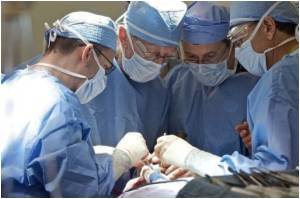Until a number of fatal air crashes took the lives of transplant personnel, the transplant community was largely unaware of sub-standard transportation practices for donor organs.

In the U.S., the Organ Procurement and Transplantation Network (OPTN) is responsible for maintaining the national transplant waiting list which currently has more than 72,000 patients on the active wait list and only 8,477 donors. Given the scarcity of donor organs the need to quickly expedite their recovery and delivery to intended transplant patients is apparent. Many times procurement by air transport is necessary and at times dangerous due to nonstandard practices as John Renz, M.D., Ph.D., from the University of Chicago points out in his report.
Dr. Renz evaluated fatal and non-fatal procurement air accidents in the U.S. which were reported to the National Transportation Safety Board (NTSB). He found in one incident, a surgeon who was not licensed to fly at night attempted to do so and crashed on take-off, killing himself and a physician's assistant. Other accidents involved pilot error such as runway overrun, mismanagement of an abnormal flight control situation, and lack of flight crew coordination. "No accident was associated with the processes of procurement," said Dr. Renz. "It was the tolerance of dangerous operational practices, not found in commercial airline service, which contributed to the incidents."
A prior study by Englesbe and Merion calculated that the procurement air travel fatality rate is 1000 times higher than commercial aircraft, speculating the "riskiest job in medicine" belongs to transplant surgeons involved in procurement transport. In his editorial also published in this month's issue, Dr. Robert Merion, Professor of Surgery at the University of Michigan Health Systems and President of Arbor Research Collaborative for Health, adds, "We need better data on organ procurement travel and a commitment to zero tolerance policy for procurement-related travel accidents." Dr. Merion, who lost four colleagues in a 2007 procurement flight crash which also claimed the lives of the two pilots, suggests the outcome of each procurement flight or ground transport be reported to the OPTN.
In his report, Dr. Renz also presents measures to create a "culture of safety" among those involved with organ transportation. He cites the use of quality aircraft, two-pilot crews, and aviation safety consultants as methods to improve safety. "Mandating turbine-powered, fixed wing aircraft, operated by reference to instruments under commercial flight regulations, to airports with continuous radar surveillance by two qualified pilots would ensure a level of competence and safety we expect with scheduled airline service," concluded Dr. Renz.
While both the study and editorial stress a need for procurement travel standards, the two doctors disagree on feasibility and cost of implementation. The authors do agree that further evaluation is necessary and should ultimately result in national procurement transportation standards that will ensure the safety of those involved in the travel and continued service for transplantation patients awaiting donor organs.
Advertisement
Source-Eurekalert








